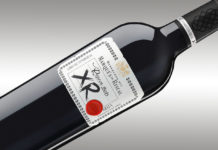The D.O. Ca. Rioja harvests 434M kg
The 2014 vintage has concluded in the D.O. Ca. Rioja with results that show a quantitative and qualitative improvement over last year. The Control Board Technical Service announced the first provisional harvest figures: 434 million kilograms of grapes —398 million red and 36 million white. This volume is in line with the current potential of the D.O.Ca. Rioja, as determined by planted surface area and the maximum yield per hectare allowed this year.
After a growing cycle with very favourable weather, Riojan vineyards showed excellent canopy development and plant health at the end of the ripening stage. This pointed to a better harvest in terms of both quality and quantity than the two previous vintages. As a whole, forecasts were confirmed, despite less than ideal weather during harvest.
On 21 October, the Control Board announced the official end of a harvest that had begun on 30 August in the eastern-most town of the Wine Region, Alfaro. The harvest had gradually accelerated until the first week of October, which is usually the most intensive harvesting period in Rioja. During this period more than 300 million kg of grapes arrived at the crush pads. The grapes’ excellent condition prompted optimistic forecasts for the majority of wines.
The last third of the harvest was affected by bad weather, resulting in outbreaks of grey rot. This required Rioja growers to once again show how well prepared they are to face such situations and get the best out of each plot through selective harvesting. Adverse effects were minimised in most vineyards which had received appropriate treatment —cluster thinning, leaf plucking, etc.— thereby reducing the percentage of affected grapes.
Total grape production surface area in the region for 2014 was 61,536 hectares, three hundred less than the previous vintage. Of these, 57,665 hectares are planted with red grape varieties —which produced 398 million kg— and 3,871 hectares with white grape varieties— whose production amounted to 36 million kg. Total production was 434 million kg, although the grapes to be disqualified due to excessive yields are still to be deducted from this figure. The Control Board will soon start the approval process —which involves laboratory tests and tastings— to accurately rate each batch of new wine made.






